Vitamin K
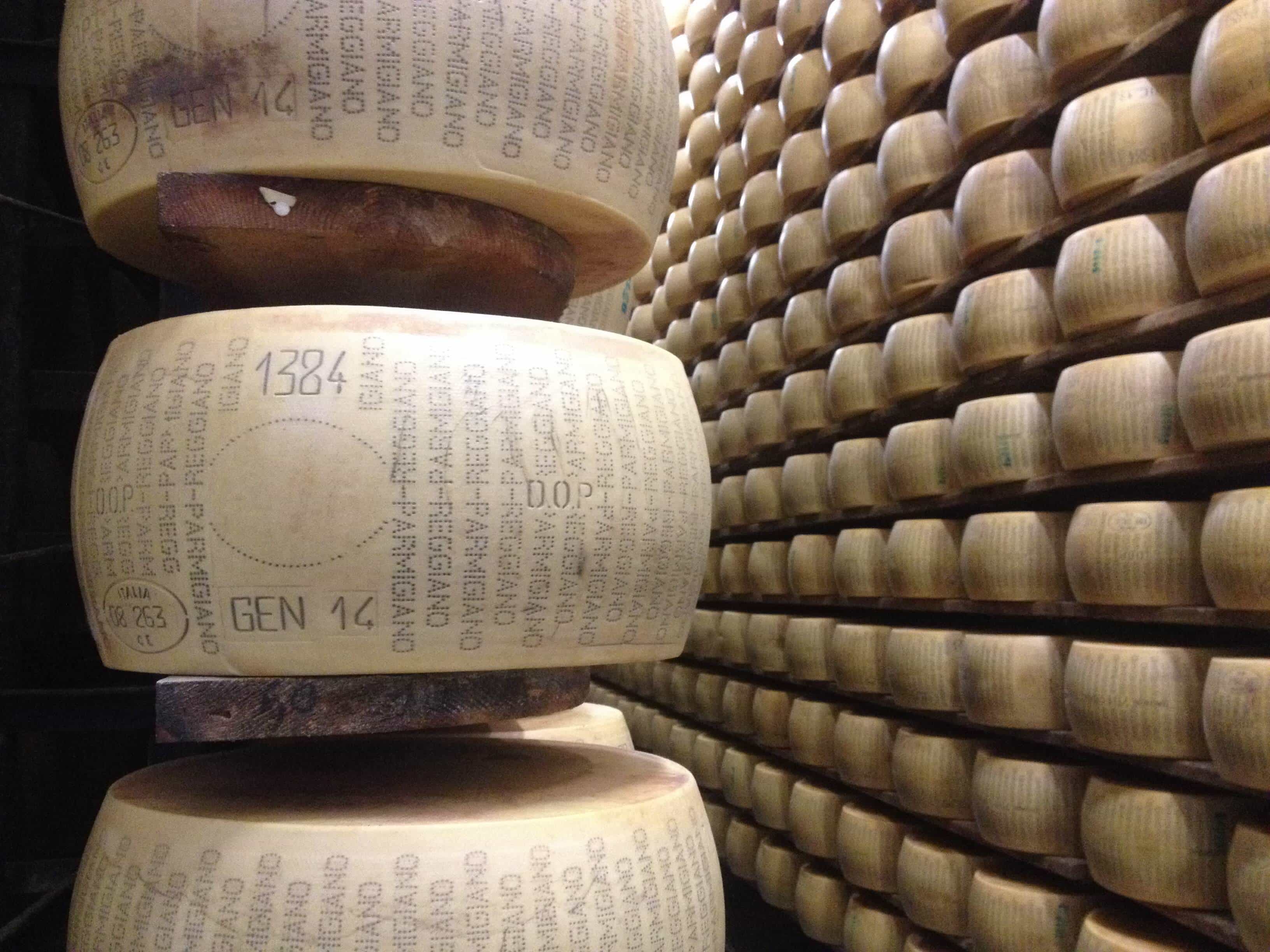
K1 (Phylloquinone) and K2 (Menaquinones)
Uses
Vitamin K is required for complete synthesis of certain proteins, called Vitamin K Dependent Proteins (VKDP), that are needed for blood coagulation, controlling the binding of calcium in bones and other tissues, controlling cell growth, and many other processes. K is required to carboxylate these VKDPs, essentially activating them for use. Once carboxylated, these VKDPs can fulfill their function in our body.
One important VKDP is called osteocalcin, which binds to the calcified matrix of bone tissue, allowing our bones to grow and repair. Vitamin K2, not K1, is required to carboxylate osteocalcin, making it usable by our body.
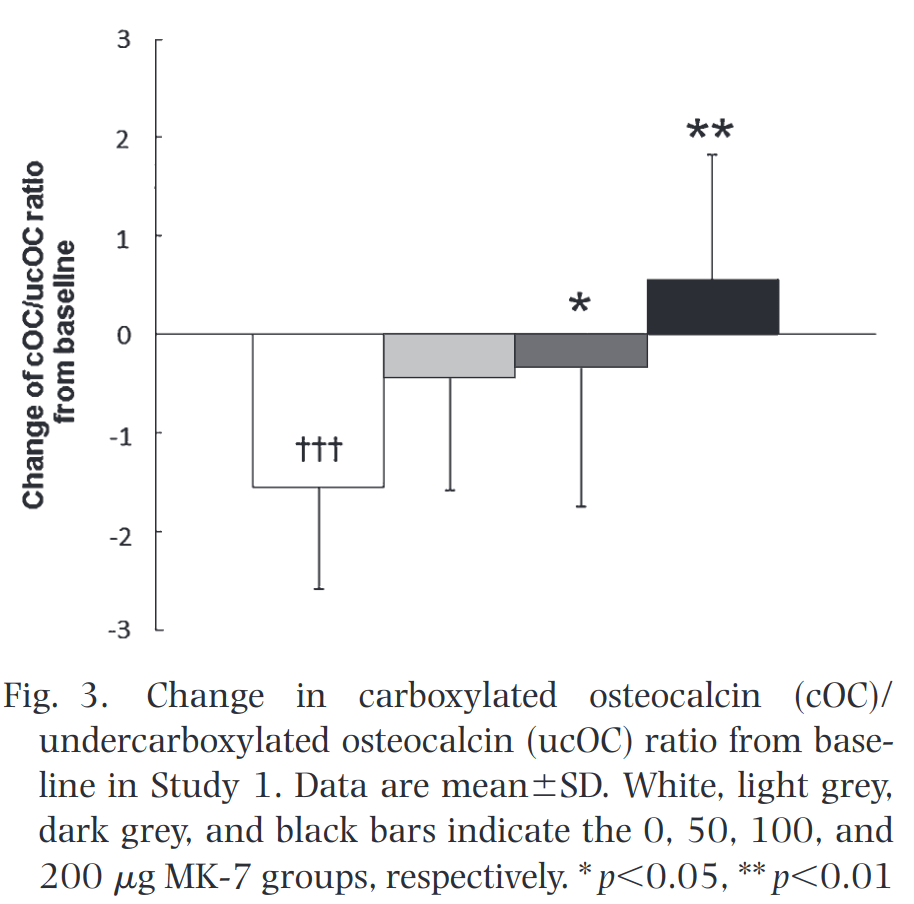
Deficiency
If VKDPs remain undercarboxylated in our body due to a K2 deficiency, they run the risk of forming salts with phosphates. These calcium salts are what deposits onto soft tissues such as kidneys, which we call kidney stones, and blood vessels, called vascular calcification and is an independent predictor of cardiovascular disease.
Because a K2 deficiency also leads to low levels of carboxylated VKDPs, this causes weakened bones and the interruption of many other processes, 17 of which have been discovered to date.
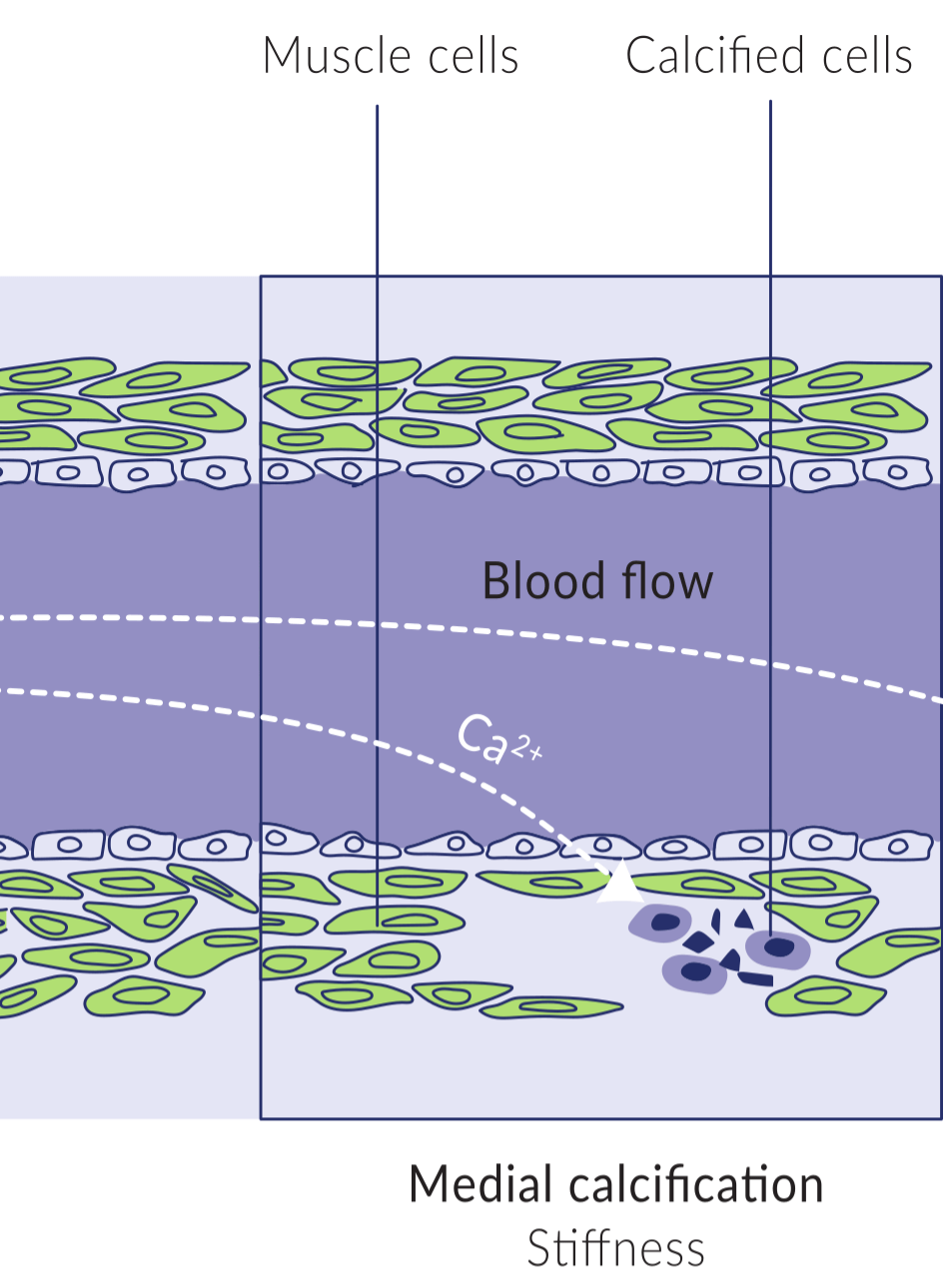
Plant Vs Animal
K1 is the plant version of vitamin K. Our body only uses K1 for activating VKDPs used in blood coagulation, and inefficiently converting it into K2 MK-4. However, fermented plants may contain K2, since the culture can convert K1 into K2.
K2 is the animal version of vitamin K which can activate all VKDPs. Raw and cooked animal products contain some K2, where fermented animal products contain high amounts of MK-4 up through MK-13. MK-13 is a longer chain version of K2 than MK-4, and is more bio-available, making it more useful for our body.
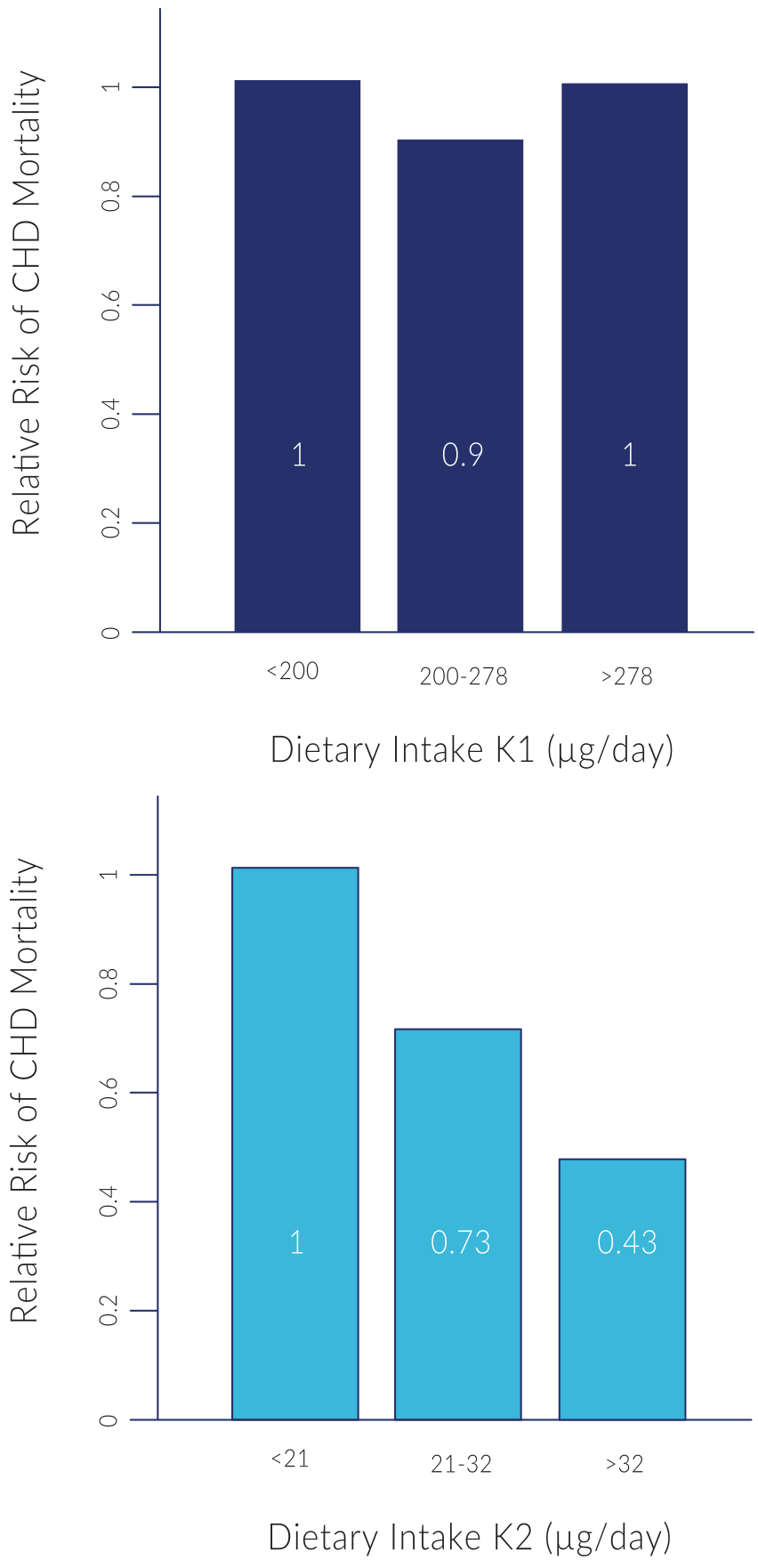
Dose
Unfortunately, research into proper K2 intake is limited. But, it appears that at least 200µg per day of a K2, with a longer chain than MK-4, is highly desirable for proper carboxylation of VKDPs.
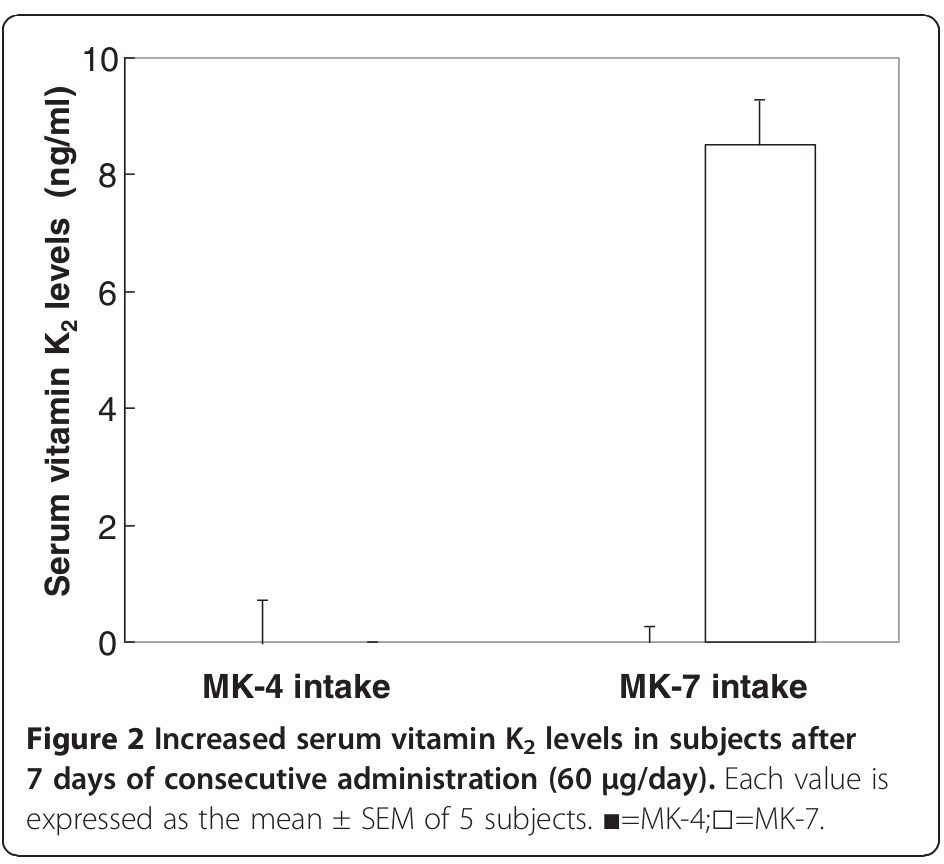
How to Get Enough
Dairy products, especially when fermented, contain significant amounts of long chain K2. Since Vitamin K is fat soluble, fat free foods contain no K2, so always opt for whole dairy products with as little processing as possible.
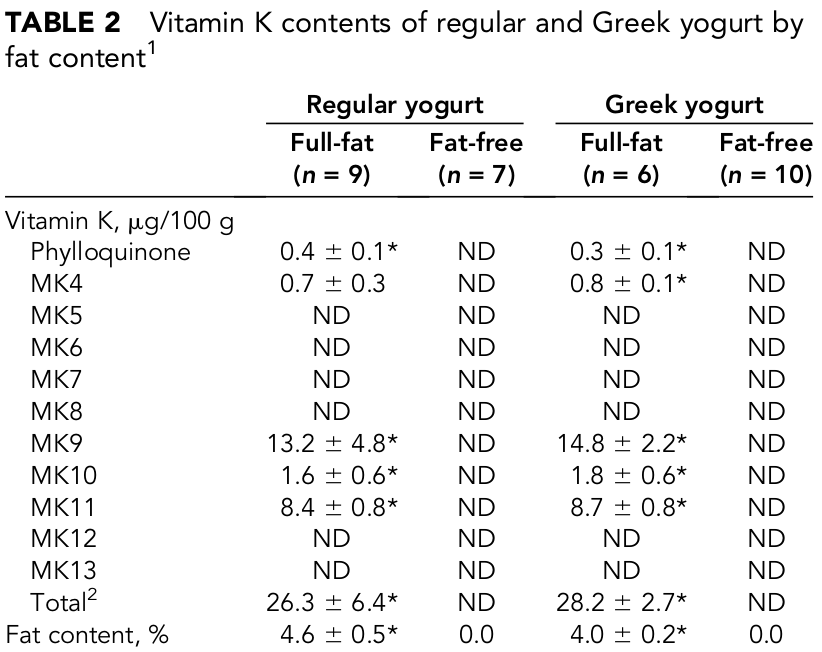
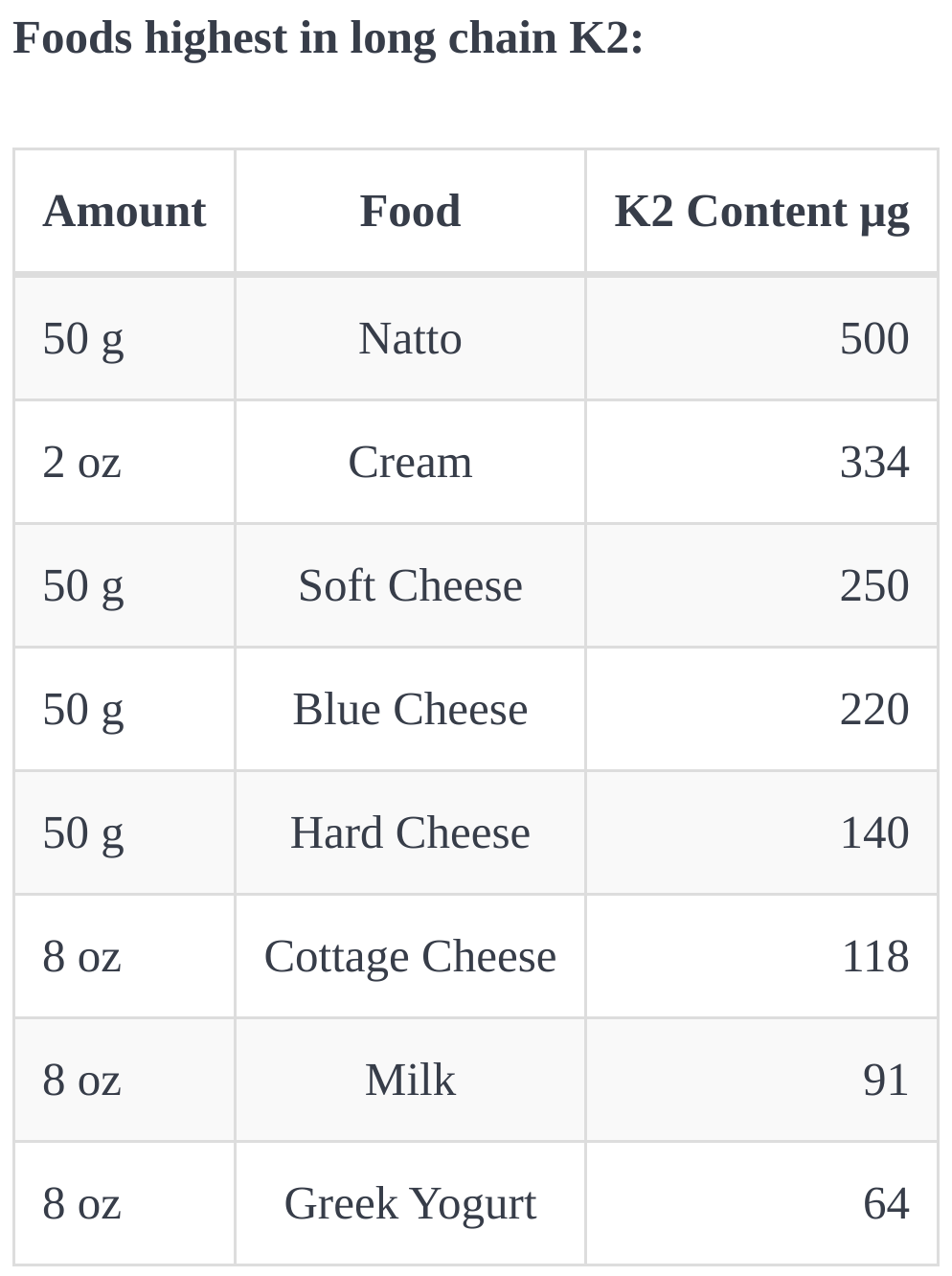
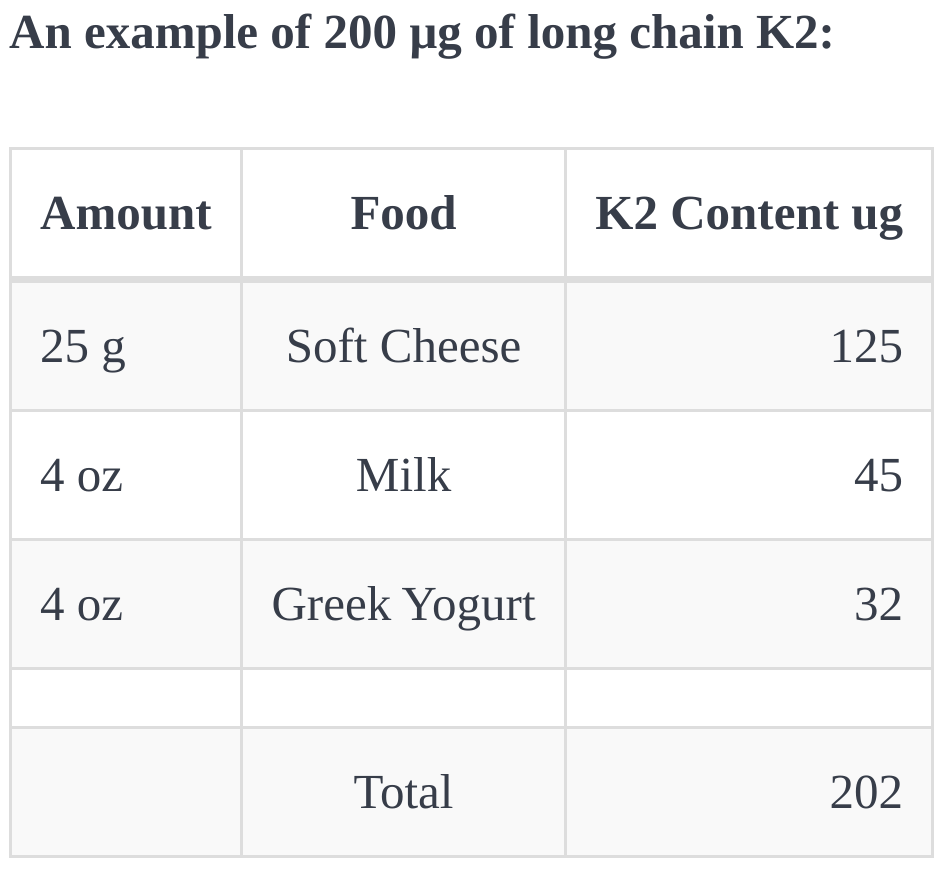
Checking Your Levels
Vitamin K has only been researched fairly recently and at this time, there is no universal test for measuring K2 levels in the body. A measurement of undercarboxylated VKDPs gives a good hint towards K2 levels, but this test is not available publicly either. The good news is that Vitamin K is attracting interest quickly, so expect to see progress here.
References
- Goh, Norman; Davoudi, Dorvan. Vitamin K2 a Complete Primer. vitamink2.ca. 2018
- N. Inaba, T. Sato, and T. Yamashita, “Low-Dose Daily Intake of Vitamin K2 (Menaquinone-7) Improves Osteocalcin γ-Carboxylation: A Double- Blind, Randomized Controlled Trials,” Journal of Nutritional Science and Vitaminology, vol. 61, no. 6, pp. 471–480, 2015.
- T. Sato, L. J. Schurgers, and K. Uenishi, “Comparison of menaquinone-4 and menaquinone-7 bioavailability in healthy women,” Nutrition Journal, vol. 11, no. 1, Dec. 2012.
- Spronk HM, Soute BA, Schurgers LJ, Thijssen HH, De Mey JG, Vermeer C. “Tissue-specific utilization of menaquinone-4 results in the prevention of arterial calcification in warfarin-treated rats.” J Vasc Res. 2003;40:531–537.
- Fu, Xueyan; Harshman, Stephanie G.; Shen, Xiaohua; Haytowitz, David B.; Karl, J. Phillip; Wolfe, Benjamin E.; Booth, Sarah L. “Multiple Vitamin K Forms Exist in Dairy Foods.” Current Developments in Nutrition cdn.117.000638. 2017.